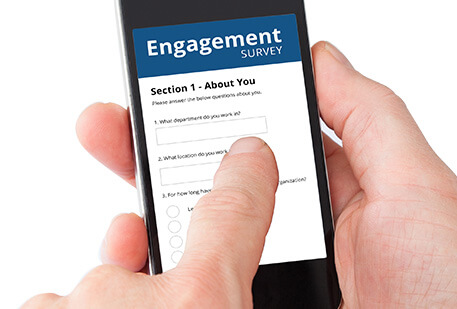Turn HR expenses into profits: get more returns from your employees for fewer dollars
Everyone is looking for ways to make sure they’re getting the most benefit from the dollars they’re currently spending to recognize and award their people; or better yet … how to get even better results for less money!
Joe works as an Engineer in a large manufacturing plant. Every month, he and his colleagues anxiously await the company newsletter to view the photo of the General Manager and see if he was wearing a tie. When the weather heats up, in late May or early June, the newsletter displays an open collar photo, so this was the signal for everyone to take off their ties for the summer.
While this was a fun exercise and an appreciated dress code in Arizona, Joe’s wonders, “Who the heck is this guy? Wouldn’t it be great if he just wandered by every now and then and waved at us?” What Joe is experiencing is the very basics of good employee recognition — ‘Management by Walking Around’ (or in this case, the lack thereof)!
In order to stay in touch with the people who report directly to you, simply walk around, talk to them, share with them, observe them, and don’t be critical. If you do this with all your employees on a regular basis, you will quickly identify where they are succeeding, where they are struggling, and where they need help.
As a natural by-product of this technique, a trust relationship builds up between employees and manager. The employees will feel like their manager knows what they’re doing and the manager will have a better rapport to address issues, both good and bad, with their employees. Here are five keys that will help:
1) Visit everyone
2) Stay positive
3) Be genuine
4) Make sure it’s not all business
5) Don’t expect results right away
So what does this have to do with turning expenses into profits? First, it’s an extremely effective way of engaging employees emotionally. It’s also easy and free! The theory is supported by a vast amount of research from experts like the Gallup Organization all the way back to the American psychologist Abraham Maslow, who stated that appealing to employees’ self-esteem (their desire to be loved and respected) is where real engagement begins. Relationships are the foundation on which effective recognition is built. If you don’t have them with your people you will waste your money and time trying to buy their discretionary performance.
Here are three strategies to share with your managers:
- It’s All About Perception: The secret to effective recognition is employee perception. If managers are seen as just “going through the motions”, employees won’t buy it, they’ll feel underappreciated, and will ask you to “show me the money”.
Any time employees ask for money rather than recognition, it’s a sign of a training problem, not an awards problem. However, when supervisors see Recognition and Performance Improvement as valuable tools that can actually make their job easier, they’ll get behind your program initiatives and “Make it Real!” You’ve got to win over your managers and supervisors before you can expect them to win over their subordinates.
- Look Through Your Employee’s Eyes: As supervisors become more aware of how they tend to view things differently than their subordinates, you are on track to overcoming the reason for most of the frustration, reduced productivity, turnover, and lack of cooperation in your company.
A George Mason University study shows that while employees consistently rate ‘Recognition and Being Informed’ near the top, and ‘Good Pay’ around the middle on their list of things that motivate them at work, most supervisors assume that Good Pay is at the top and Recognition and Being Informed (another way of saying Love and Respect) are near the bottom on these employee surveys.
Until your employees believe you truly value them as human beings, any efforts you use to motivate them will be seem as manipulation and will turn them off. Management’s understanding of what motivates employees is often flawed, and the moment your intentions are viewed as “company-focused” rather than from the heart, you begin to lose them emotionally. Make sure that any actions you use to improve performance follow engagement practices that make people feel valued as members of your team, not just a cog in a big machine.
- Do it in the Right Order: Most companies already have a variety of training, recognition and incentive programs in place, but they may not be well organized and are probably not being used in the correct order. It’s a lot like dealing with your kids; if they don’t know you love them, your well-meaning discipline can come across as mean-spirited, self-serving and more about your convenience than their betterment. We suggest leading with Recognition (Love and Respect), then offering Performance Improvement opportunities (Share the Wealth) and finally special awards for high achievement (Specific Acknowledgement).
When you step back and view all of the ways you communicate with your employees as one cohesive strategy, rather than a group of unrelated awards programs, you will quickly be able to identify overlap, redundancy and areas of confusion. Then, as you relaunch using a training-based approach that puts your people’s emotional needs first, you will enjoy both up front savings and measurable ROI that will surprise and please you and your management team.
John Schaefer is a consultant with more than 20 years of experience helping companies realize and react to the employer/employee disconnect. He is the author of “The Vocational Shrink – An Analysis of the Ten Levels of Workplace Disillusionment,” as well as “The Vocational Shrink – The Game” and his manager-training program “Why Should Supervisors Care (or what they’re really thinking) . . . What’s in it for Me?” Learn more at www.schaeferrecognitiongroup.com or call 1-888-646-6670 (US).
 CA-EN
CA-EN UK
UK AU
AU US
US NZ
NZ PH
PH ZA
ZA SG
SG HK
HK


